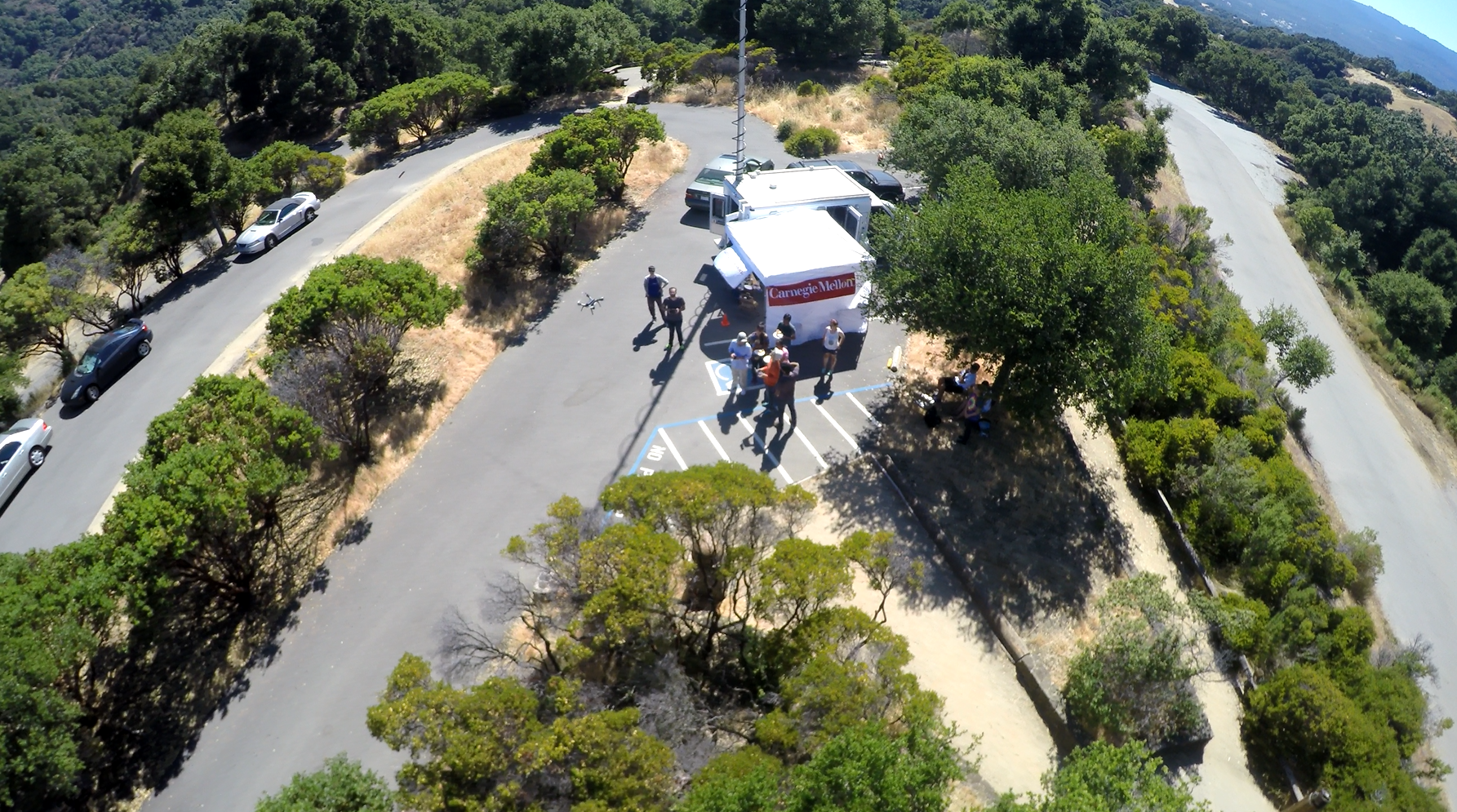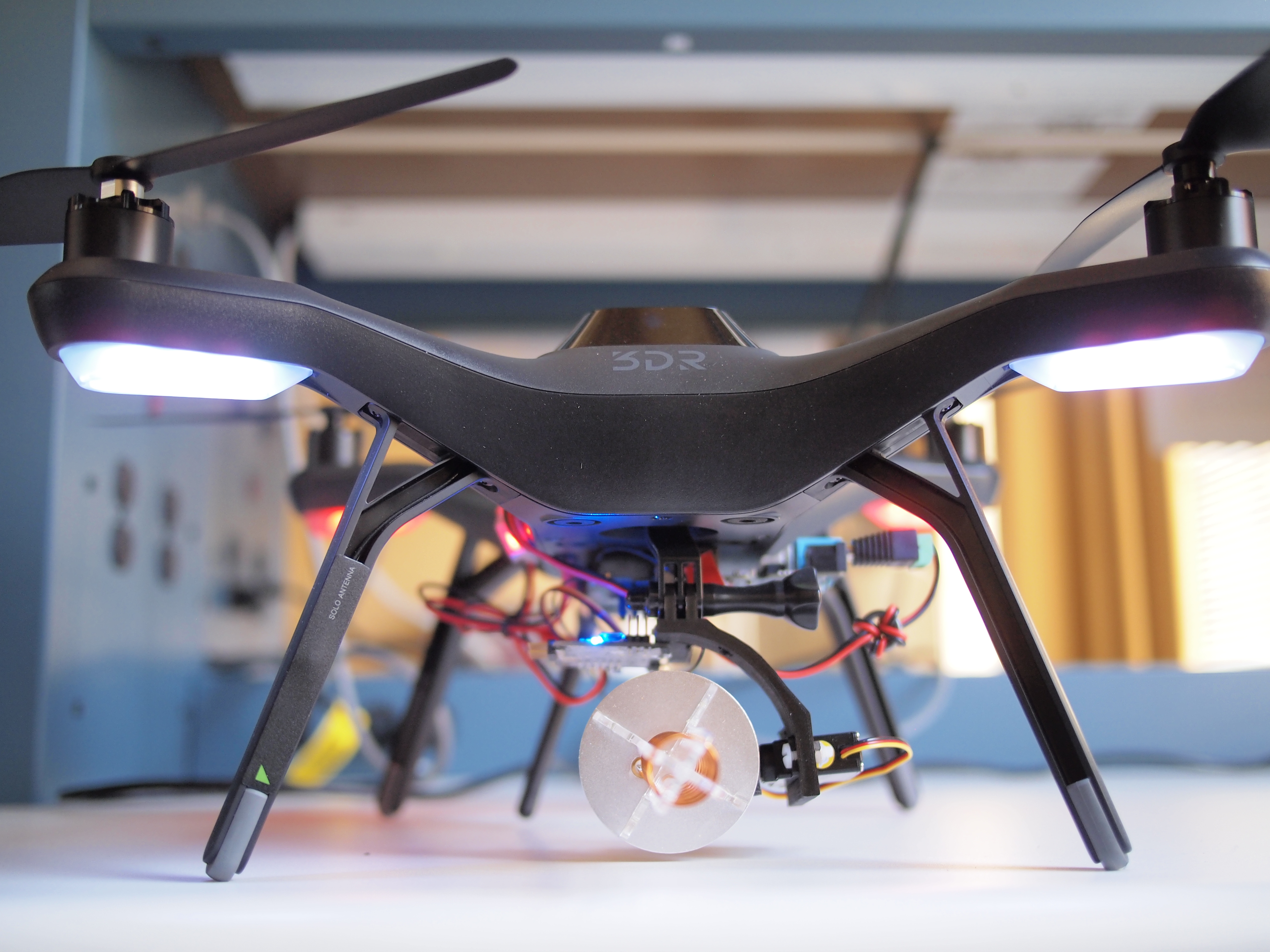When disaster breaks the internet, the CMU-SV Wireless Innovators will fix it—with drones
Adam Dove
Aug 16, 2016

Source: CMU-SV
When a natural disaster strikes, not only does it put people’s lives in danger—it can leave them completely in the dark. Earthquakes knock out power, tornadoes pull down phone lines, and hurricanes make cellphone and internet connections impossible. When all else fails, the only way to get in touch with emergency personnel—and loved ones—is the radio.
For both authorities and civilians, Ham radio can be a lifesaving tool. Unfortunately, though the number of licensed amateur radio operators has risen steadily, with more than 715,000 in the FCC database by the end of 2013, these “hams” only make up around 2% of the country’s population. But every year, on the fourth weekend of June, amateur radio enthusiasts from across the U.S. and Canada fire up their radios to connect with each other and with people from around the world in an event known as Field Day, hosted by the Amateur Radio Relay League (ARRL).
“Amateur radio operators try to contact as many Ham radio stations as possible,” says Yalei Song, an electrical and computer engineering (ECE) alumna and president of CMU-SV’s amateur radio club, the Wireless Innovators. “Sometimes, you have people in California speaking to people in Hawaii, or even Australia. We were even able to reach others in France. Some people get very competitive, seeing how many they can reach.”
Sometimes, you have people in California speaking to people in Hawaii, or even Australia. We were even able to reach others in France. Some people get very competitive, seeing how many they can reach.
Yalei Song, ECE alumna and president of the Wireless Innovators, CMU-SV
Carnegie Mellon University’s Silicon Valley campus has been participating in Field Day since 2014. But this year, the Wireless Innovators decided to have a little fun with more than just their radios.
“The average person today doesn’t really use voice communications that much,” explains ECE doctoral student Ervin Teng, the club’s technical operations manager. “What they care about is internet communication: text messages, photos. All of these things are incredibly valuable in emergency communications.”
Normally, setting up radio and internet communications in remote or extreme locations requires a large antenna mast, and a lot of power. This can take many hours or even days to establish—and in an emergency, time is of the essence.
The solution? Drones.

Source: CMU-SV
The team at CMU-SV set up what they call a “rapidly deployable flying network.” By attaching a Wi-Fi router to a drone, then flying the drone up above surrounding trees and buildings, the transmitter is able to connect to another site several kilometers away and relay the connection back to people on the ground, without the need for costly, complicated infrastructure.
“We were able to watch a YouTube video on our phones on the ground, connected to the drone in the air,” Teng says. “It paves the way for further work in emergency communications. You can carry these drones out and create a network within minutes, providing Wi-Fi to an entire area.”